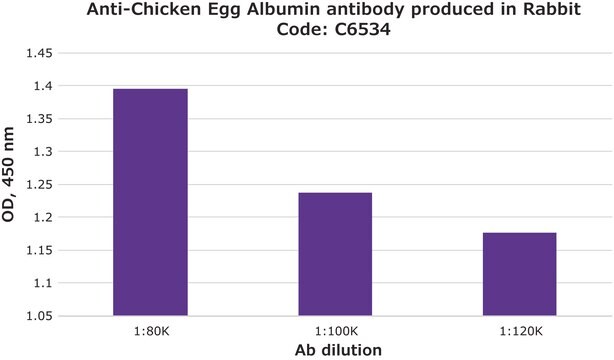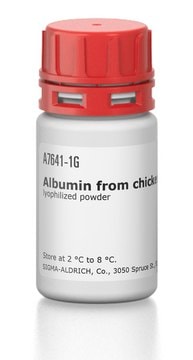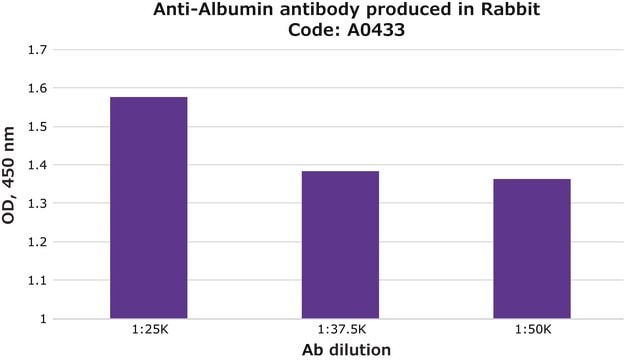SAB4200702
Anti-Chicken Egg Albumin (Ovalbumin) antibody, Mouse monoclonal
clone OVA-14, purified from hybridoma cell culture
Sinónimos:
Albumin, Plakalbumin, chicken egg
About This Item
Productos recomendados
biological source
mouse
Quality Level
antibody form
purified immunoglobulin
antibody product type
primary antibodies
clone
OVA-14, monoclonal
form
buffered aqueous solution
mol wt
antigen 45 kDa
species reactivity
chicken, turkey
concentration
~1 mg/mL
technique(s)
competitive inhibition ELISA: suitable
dot blot: suitable
immunoblotting: suitable
indirect ELISA: 0.1-0.2 μg/mL using 10 μg/mL Albumin from chicken egg white (A5503) for coating.
isotype
IgG1
shipped in
dry ice
storage temp.
−20°C
target post-translational modification
unmodified
Gene Information
chicken ... Oval(396058)
General description
Ovalbumin (323-339) is the most abundant egg white protein surrounded by B-cell epitopes, which are bound by specific IgE antibodies. In addition, it also contains CD4+ T cell epitopes. Ovalbumin is a monomeric protein with a molecular mass of 45000Da.
Immunogen
Biochem/physiol Actions
Physical form
Storage and Stability
Other Notes
Disclaimer
¿No encuentra el producto adecuado?
Pruebe nuestro Herramienta de selección de productos.
Storage Class
10 - Combustible liquids
flash_point_f
Not applicable
flash_point_c
Not applicable
Elija entre una de las versiones más recientes:
Certificados de análisis (COA)
¿No ve la versión correcta?
Si necesita una versión concreta, puede buscar un certificado específico por el número de lote.
¿Ya tiene este producto?
Encuentre la documentación para los productos que ha comprado recientemente en la Biblioteca de documentos.
Los clientes también vieron
Nuestro equipo de científicos tiene experiencia en todas las áreas de investigación: Ciencias de la vida, Ciencia de los materiales, Síntesis química, Cromatografía, Analítica y muchas otras.
Póngase en contacto con el Servicio técnico













